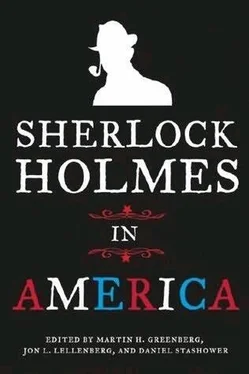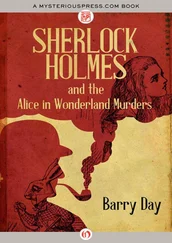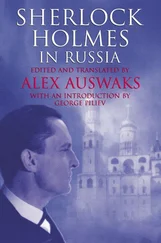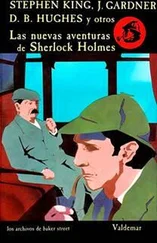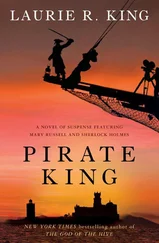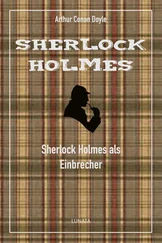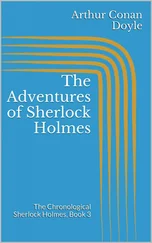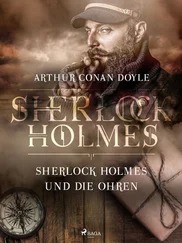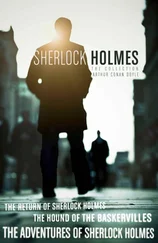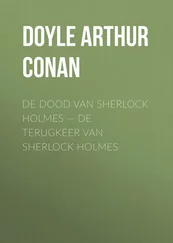And yet I live . Keep that in mind. We’ll come back to it in our final peroration. And what identity, of all possible identities, does the master of disguise, the man who could impersonate stable hand and wizened bookseller alike, employ? An Irishman. An Irish-American.
An Irish-American named Altamont. As in Charles AltamontDoyle.
Sir Arthur’s father.
The pinnacle of Sherlock Holmes’s career-his greatest service to England-comes as an Irish-American named “Altamont.”
In this valedictory, in which Holmes utters the memorable lines: “Stand with me here upon the terrace…” Conan Doyle sums up all his ambivalence about his own nature and his own family, and seems to reconcile it at the very end. Holmes and Watson, together for the last time, with the proximate enemy, von Bork, vanquished, but an east wind coming, an east wind such as never blew on England yet. God’s own wind… And then, embarrassed by this most un-British display of sentiment, Holmes turns his attention to von Bork’s check for five hundred pounds and rushes off to the bank to cash it before the Kaiser can stop payment on it.
Thus does Holmes’s quintessential Englishness assert itself.
And yet I live. Why does Holmes say this, at this particular moment, and in this particular context? Why would he not live? After all, many years before, he had vanquished Professor Moriarty with his knowledge of baritsu, and dodged Colonel Moran’s rocks and avoided his exploding bullet. By the time of His Last Bow , on the very eve of World War I, Holmes had survived every attempt on his life, every battle, every boxing match, Dr. Roylott’s swamp adder in The Speckled Band , even Tonga’s poisoned dart in The Sign of the Four .
On the eve of World War I… when just across the Irish Sea a storm was gathering that would culminate with the Harp flying, however briefly, above the G.P.O. in Dublin…
When both the British Empire and Conan Doyle himself stood, however unknowingly, not on the terrace but upon the precipice, into which both would soon hurtle. As Britain would lose her Empire, Conan Doyle would lose his faith, and embrace spiritualism; the father of the ultra-rationalist, “no ghosts need apply” Sherlock Holmes, would not only reject the faith of his fathers, he would embrace a far older and more primal faith: the faith in the spirit world.
The faith of the ancient Celts, who could cross over between the dark land of Mordor and the living.
Who knew that Life and Death were and are two sides of the same coin, inevitably twinned, not to be feared but embraced as a necessary duality. Like sun and moon. And: Male and female.
Which brings us to the last and most important story link in our chain: The Sign of the Four.
In which Holmes and Watson meet another “mor” character. Who turns out to be Holmes’s deadliest enemy.
Mary Mor stan.
Or, as she was briefly known, Mrs. John H. Watson.
Whose pivotal, vital, and indispensable role in the Canon is not sufficiently understood or remarked upon. For if Sherlock as “Altamont” was a partial salvation of Conan Doyle’s father, can it not be said of Mary that she is nothing less than “the Mam”?
Moriarty, Moran, Morstan. From Holmes’s point of view, the three greatest challenges of his career, each one inextricably linked by ethnicity and etymology. Moriarty and Moran we have already considered. Let us now turn our attention to the formidable Miss Morstan.
The literary parallel between her and Colonel Moran should be obvious. He was an officer in the Indian Army; her father was an officer in the Indian Army. Their names are, in fact, nearly identical, and indeed “Morstan”-with its wonderful frisson of implicit death-is anagrammatical for “St. Moran.” Thus, Mary Morstan is the “good side” of Colonel Moran.
Holmes, however, takes an instant dislike to her. When at the conclusion of The Sign of the Four Watson announces their engagement, Holmes coldly tells his Boswell that he cannot congratulate him. For Holmes has instantly sensed an enemy, however innocuous she might appear, and realizes, with the chill wind of death blowing past him in the shape of Tonga’s dart, that the world will not be able to contain both him and Miss Morstan.
One of them will have to die.
Now, it may be objected that Mary Morstan is not Irish. Apparently born in India, her mother dead, she is sent to school in Edinburgh (much like Watson himself, who was packed off to boarding school in the Scottish capital as a youth), and later comes down to London. But consider the evidence:
1. Her Christian name is Mary, the most common Irish name for a girl. Conan Doyle’s own mother was named Mary.
2. By her own admission, she has no relatives in England.
3. She goes to school in Edinburgh, with its large Irish population.
4. She earns her living as a governess, a standard occupation in England for an unmarried Irish girl.
5. She is described by Watson-a man who boasts of great experience with women-as blonde with pale skin and large blue eyes: typical physiognomy of the west of Ireland, with its heavy Viking influence.
6. While the name Morstan is unusual, there is a district in County Down, near Belfast, called Morstan Park.
It’s very likely, therefore, that Captain Arthur Morstan-interesting choice of a first name-was born in Northern Ireland (there’s the Home Rule problem again), raised in Edinburgh, joined the Indian Army, not the regular Army (which might indicate that he was a Catholic, not a Protestant). In charge of a convict settlement in the Andaman Islands-a fit duty station for an Irishman, perhaps, but not an Englishman-he later dies of heart attack brought on by an attack of furious temper.
When Watson marries Mary Morstan, Holmes’s world is shattered. Other than scorn, he has no way to fight back. With Dr. Roylott, he could unbend the poker; with Moriarty, he could jiu-jitsu him over the side of the Reichenbach Falls; with Col. Moran, he could outsmart him and deliver him into the hands of the police.
But against Mary, he could do nothing.
And so Holmes “dies” at the conclusion of The Final Problem , the best and wisest man Watson had ever known.
There follows the three years-note the symbolic number three-of the Great Hiatus, during which we read of the remarkable explorations of a Norwegian named Sigerson, time in Tibet, a meeting with the Dalai Lama, a visit to-tellingly-Persia, Mecca, and Khartoum (just after the death of General Gordon, whose portrait hung upon the wall in Baker Street), and the coal-tar derivative research in Montpelier. Complete bunkum, of course, as Edgar W. Smith, the best and wisest member of the Baker Street Irregulars, pointed out. Holmes did nothing of the sort. Without the linguistic skills of Sir Richard Burton, the look-in at Mecca would very likely have ended at the business end of an Arabian scimitar.
For the truth is, during the period of the Great Hiatus, Sherlock Holmes was, in fact, dead. As dead as Mordred and Mordor and Moriarty.
And what recalls him to life? What brings him back to face the villain Moran (and thus the ghost of Moriarty) in The Empty House ? Only one thing.
The death of Mary Morstan. The shape-shifter, Fata Morgana’s sister. Without Watson’s sad bereavement, there can be no return of Sherlock Holmes.
In order for Holmes to live again, Mary must trade places with him.
Thus does Holmes’s greatest enemy make the most heroic sacrifice. Mary Morstan gives up her husband and returns Watson to the embrace of Sherlock Holmes, Mrs. Hudson, and Baker Street.
Just as “the Mam” had to sacrifice herself for her family in the face of Charles Altamont Doyle’s alcoholism and penury, so does Mary Morstan sacrifice herself that “Altamont” might live. After all, it was “the Mam” who entreated her son to resurrect Sherlock, after his death in The Final Problem ; and upon relenting, what did Conan Doyle say to her?
Читать дальше
